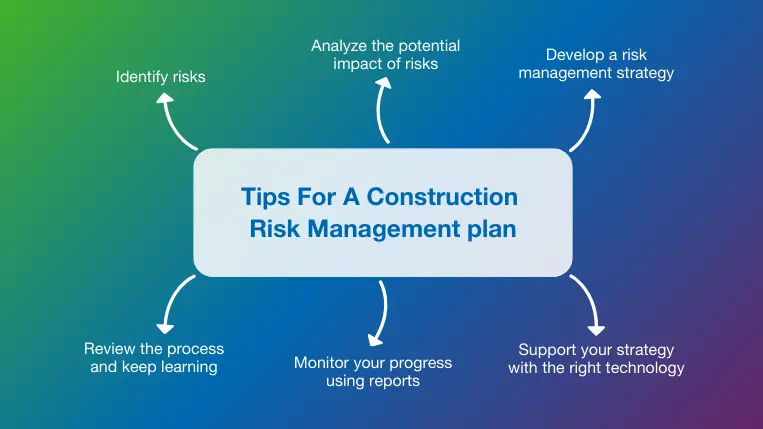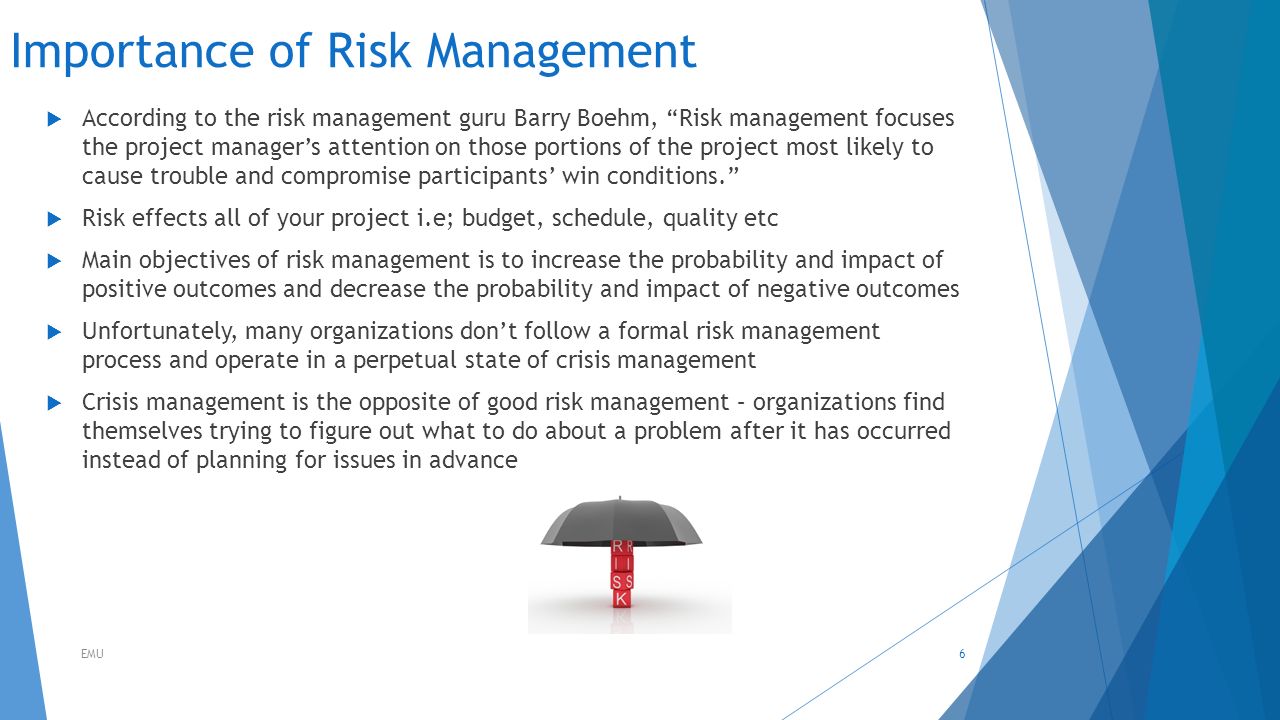Why Organizations Should Emphasize the Importance of Risk Management Now More Than Ever
Why Organizations Should Emphasize the Importance of Risk Management Now More Than Ever
Blog Article
Discovering the Significance of Risk Management for Effective Decision-Making Methods
In the elaborate globe of organization, Risk Management arises as a critical variable in the decision-making procedure. The capability to recognize possible risks and possibilities, and plan as necessary, can spell the distinction between success and failure.
Understanding the Idea of Risk Management
Risk Management, an essential component in decision-making, is typically misunderstood or oversimplified. Typically, it refers to the identification, analysis, and prioritization of threats to decrease, monitor, and regulate the likelihood or influence of unfavorable occasions. It's not simply regarding stopping unfavorable results, but also concerning identifying possible possibilities. Risk Management involves regimented and structured techniques, using data and informative analyses. It needs a detailed understanding of the organization's context, goals, and the prospective risks that can obstruct them. From monetary uncertainties, lawful obligations, calculated Management errors, to crashes and all-natural disasters, it resolves different risks. Significantly, effective Risk Management is not stagnant; it's a continuous, progressive process that develops with changing situations.
The Duty of Risk Management in Decision-Making Processes
In the world of strategic preparation and service procedures, Risk Management plays an indispensable duty in decision-making procedures. Risk Management thus comes to be an essential device in decision-making, assisting leaders to make informed selections based on a comprehensive understanding of the dangers involved. Risk Management offers as a crucial component in the decision-making procedures of any kind of organization.

Just How Risk Management Enhances Strategic Preparation
In the context of tactical planning, Risk Management plays a pivotal role. Starting with the identification of potential dangers, it even more encompasses the implementation of Risk reduction procedures. The duty of Risk Management is not static but dynamic, as it demands constant surveillance and adjusting of approaches.
Recognizing Prospective Risks

Carrying Out Risk Reduction
Risk reduction strategies can vary from Risk evasion, Risk transfer, to run the risk of decrease. Each technique needs to be tailored to the specific Risk, considering its potential effect and the organization's Risk resistance. Effective Risk mitigation requires a deep understanding of the Risk landscape and the possible impact of each Risk.
Surveillance and Changing Strategies
Though Risk mitigation is a crucial action in tactical preparation, continuous surveillance and adjustment of these methods is equally crucial. This ongoing process permits organizations to determine brand-new risks and reassess existing ones, making certain the executed approaches remain efficient in the ever-changing organization atmosphere. It also offers a possibility to evaluate the success of the Risk Management actions, allowing adjustments to be made where needed, additional boosting strategic planning. Effective surveillance and change require making use of analytics and crucial efficiency indicators (KPIs) to gauge performance. These tools provide important data-driven understandings that can Learn More Here educate critical decision-making. For that reason, tracking and changing Risk Management methods is an essential component for improving an organization's resilience and tactical planning.
Situation Studies: Successful Risk Management and Decision-Making
In the world of company and finance, successful Risk Management and decision-making commonly act as the pillars of prosperous business. One such entity is a multinational oil company that mitigated economic loss by hedging versus changing oil costs. In another circumstances, a technology startup thrived by identifying and approving risky, high-reward techniques in a volatile market. An international financial institution, faced with regulatory unpredictabilities, effectively navigated the situation via aggressive Risk analysis and dynamic decision-making. These cases highlight the worth of astute Risk Management in decision-making procedures. It is not the lack of Risk, yet the Management of it, that frequently distinguishes effective business from unsuccessful ones. These situations underscore the essential duty of Risk Management in tactical decision-making. importance of risk management.
Devices and Techniques for Efficient Risk Management
Navigating the detailed labyrinth from this source of Risk Management calls for the right set of strategies and tools. These tools, such as Risk registers and warmth maps, aid in recognizing and analyzing potential dangers. Strategies include both measurable methods, like sensitivity evaluation, and qualitative approaches, such as SWOT analysis. These assistance in focusing on threats based on their potential influence and likelihood. Risk response techniques, a crucial part of Risk Management, involve accepting, preventing, moving, or mitigating risks. Tracking and managing threats, via regular audits and reviews, guarantee that the approaches stay reliable. With these devices and techniques, decision-makers can navigate the complex landscape of Risk Management, thus promoting educated and reliable decision-making.
Future Trends in Risk Management and Decision-Making Techniques
As we discover the vast landscape of Risk Management, it ends up being noticeable that the techniques and tools utilized today will certainly continue to develop. The concept of Risk society, where every participant of an organization is conscious and included in Risk Management, will acquire a lot more prestige. These patterns proclaim a more positive and comprehensive approach towards Risk Management and decision-making.
Verdict

Risk Management hence comes to be a crucial tool in decision-making, helping leaders to make enlightened options based on an extensive understanding of the risks entailed. Risk mitigation approaches can vary from Risk evasion, Risk transfer, to risk decrease (importance of risk management). Efficient Risk mitigation requires a deep understanding of the Risk landscape and the prospective impact of each Risk. Risk feedback methods, an essential component of Risk Management, entail check approving, staying clear of, transferring, or mitigating risks. The principle of Risk culture, where every participant of an organization is mindful and included in Risk Management, will obtain a lot more prestige
Report this page